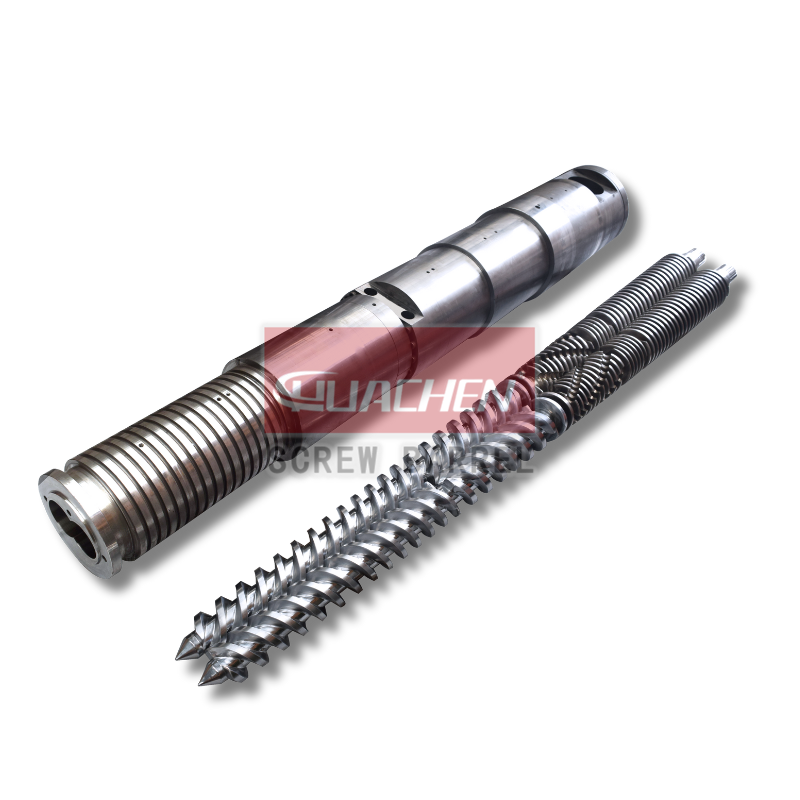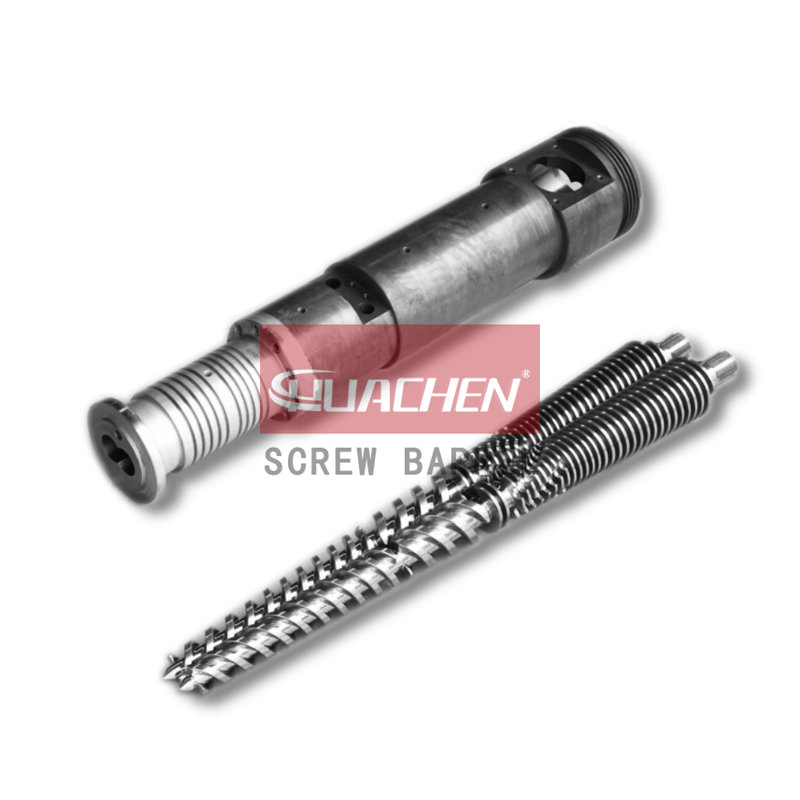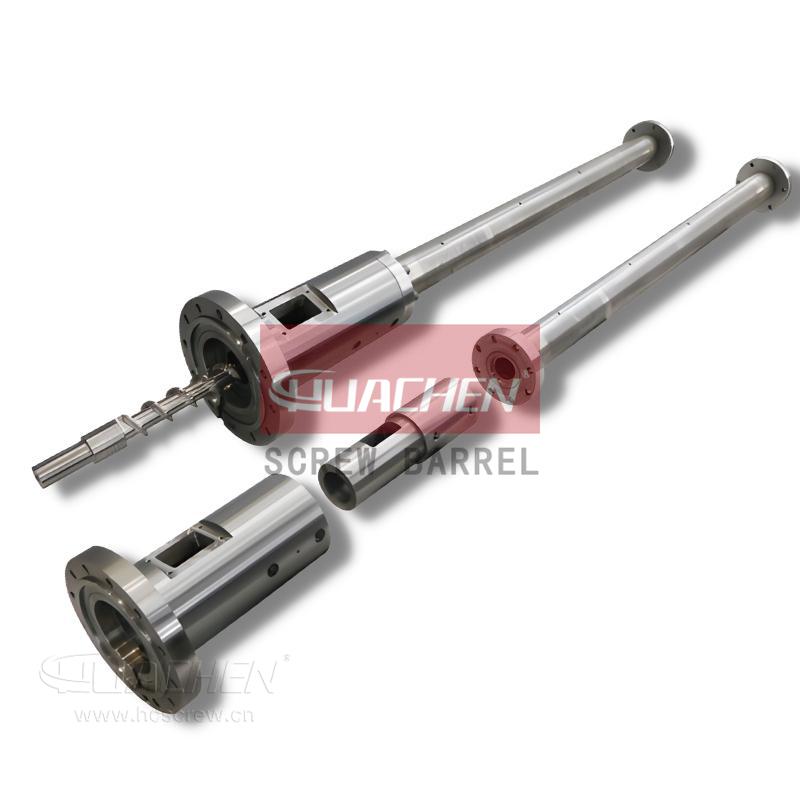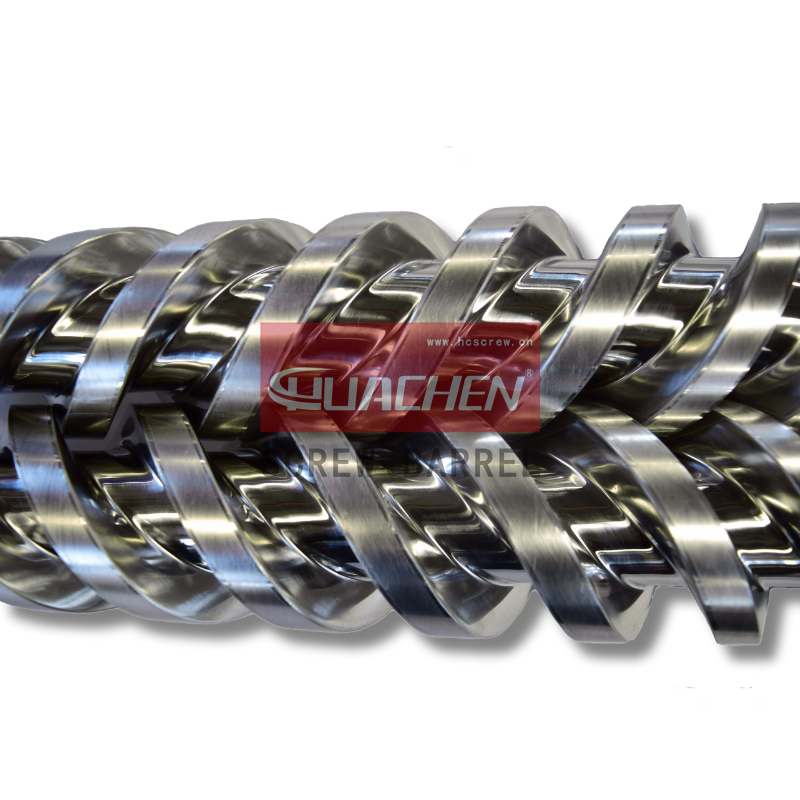Damage on Screw Barrel of Extruders: 4 Main Causes
Date:2022-6-14 Author:hcscrew
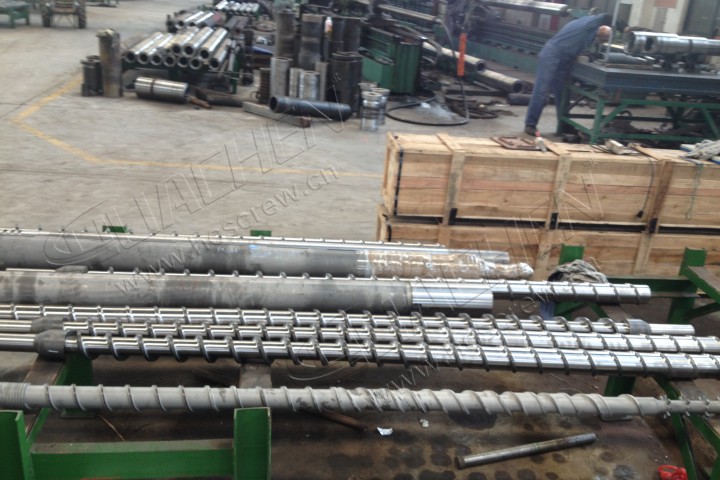
Let’s explore some of the main causes of damage after we understand the different types of screw barrel wear.
1. Straightness, concentricity, and alignment.
If you are preparing to refurbish or install a new screw, make sure that the screw is straight and concentricity is correct. When a new barrel is available and is clean, or when an existing barrel is available for mounting the screw. Then rotate it by hand, if you can, after sliding the screw into the barrel. This ensures straightness and concentricity. Ideally, the screw should be able to rotate freely inside the barrel without causing any interference. Before starting up an extruder to process a new product, the machine should be calibrated well in advance.
2. Poor screw design.
It is possible to block the channels on the screw if the capacity of the melting section of the screw is smaller than the amount of unmelted material conveyed by the feed. The pressure created in this situation actually forces the screw against the barrel on the opposite side, causing wear and damage to screw prongs and the barrel surface. This is referred to as solid wedging. Wedging usually occurs when a screw, originally designed to process a certain resin, is changed to run at a different melt rate on a different polymer.
3. Incompatible metals.
When softer materials come into contact with harder materials, they tend to wear out more quickly. In addition to the screw material, it is important to consider the overlay material of the screw prongs and whether it is compatible with the barrel lining material. It’s more likely to happen with alloys that have a low tungsten carbide content. As a result, alloys with a low carbide content are less wear resistant. Also, harder barrel materials have a greater tendency to wear.
In recent years, bimetallic screw treatment process have become one of the most commonly used processes that offer excellent corrosion resistance and wear resistance. Using high speed HVOF spraying equipment, the screw surface is melted sprayed to achieve a structurally dense bimetallic screw. While the bimetallic barrel is melt-cast, however. Using precision machining techniques, an alloy with a high tungsten carbide content is cast into the barrel and precision moulded.
4. Abrasive fillers, additives, and exotic materials.
The applications of plastics are becoming more specialised, and abrasive fillers and additives need to be better protected against wear and corrosion. In terms of abrasive wear, it is necessary to take into account resins that contain glass fibres, minerals, flame retardants, stabilisers, and other additives. Extruding these materials requires proper consideration of their corrosive wear. Most aggressive fillers can reduce the service life of screws and barrels by 50% or more. A targeted protection design on screws and barrels can extend the wear life and reduce the degree of abrasive wear.
Another common cause of screw and barrel wear and damage is foreign materials, like screwdrivers, grinder blades, and nuts and bolts. It seems that they all make their way into the moulding machine’s hopper. If not screened out or magnetized away, these materials can cause serious damage to the screw barrel. As a result of improper bonding or cracking and fracture, overlay alloys can easily break or delaminate from screw prongs. They can also break or delaminate as they move along the screw.
We hope, through digitisation, to be able to accurately measure screw and barrel wear with sensors in the future. This will enable us to determine when parts should be refurbished or replaced to ensure optimal productivity. As long as this technology is not yet perfected, plastics processors can track screw and barrel wear by comparing productivity to measures of screw and barrel wear.
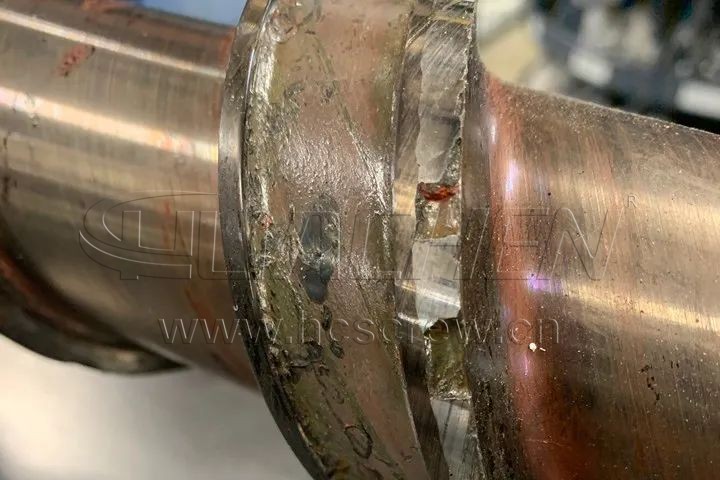
On larger extrusion plants, it may not be feasible to measure the screw and barrel regularly. Graphing changes in production efficiency versus adjustments to operating parameters establishes reference points, however. This example illustrates wear on the screw and barrel in relation to output, controller set point, energy consumption, and product quality.
By keeping good records, it is possible to predict changes in the screw and barrel with relative accuracy. Optimising component life will prevent “holding up until failure” and unplanned downtime.
5. Keypoints when installing a screw or barrel.
-It is necessary to select a screw that is suited for the application.
-Make sure screws and barrels are made of compatible alloys.
-Make sure that the screw and barrel are made with wear-resistant materials.
-Before installing any screw or barrel, check the dimensional accuracy carefully.
Summary
The above are the main causes of damage in the use of extruder screw barrel. By knowing these causes, we can effectively maintain our barrels and screws, as well as our extruders. If you have similar troubles and more questions, welcome to contact HUACHEN Screw Barrel Factory for the latest quotation and technical support.
TAGS
HUACHEN Screw barrel recent post
- High-performance PVC Screw Barrel for Efficient Extrusion
- Durable Conical Twin Screw Barrel for Precision PVC Pipe Production
- High-Speed Screw Barrel for Increased Extrusion Efficiency
- Super Wear-Resistant Bimetallic Alloy Coating Screw Barrel for High Output Extruders
- High-Precision Parallel Twin Screw Barrel for Extrusion Excellence
- Top Quality Single Screw Barrels for Plastic Extrusion Applications
- High-quality Extruder Screw Barrel for Reliable Performance
- Efficient Plastic Extrusion Screw Barrel for Superior Output
conical twin screw barrel extruder screw barrel extrusion screw barrel Foam sheet processing high speed screw barrel HUACHEN SCREW news injection screw barrel parallel twin screw barrel pa screw barrel pe making formula pe screw barrel plastic fiber processing plastic fibre screw barrel Plastic film making screw barrel plastic pipe processing Plastic profile processing Plastic raw material knowledge pp screw barrel PVC making formula pvc screw barrel related parts for screw barrel screw barrel engineering work screw barrel knowledge single screw barrel twin screw barrel
;